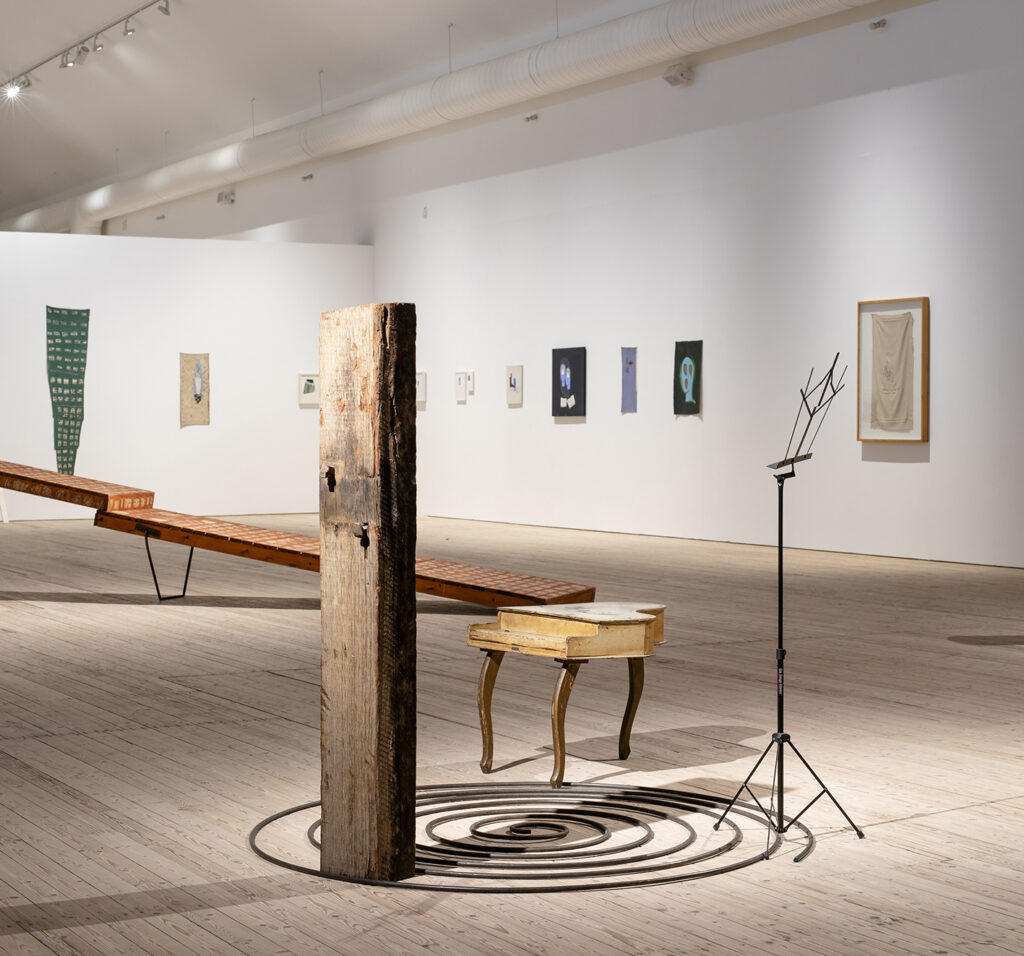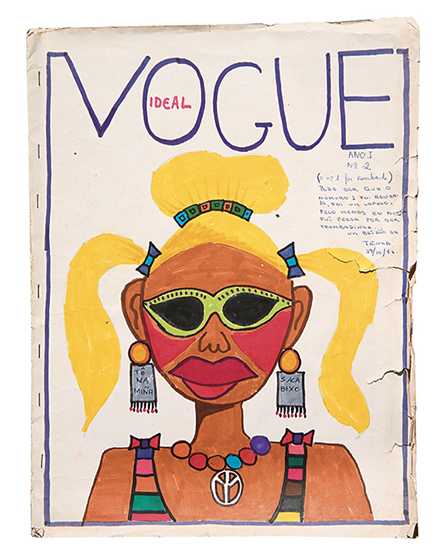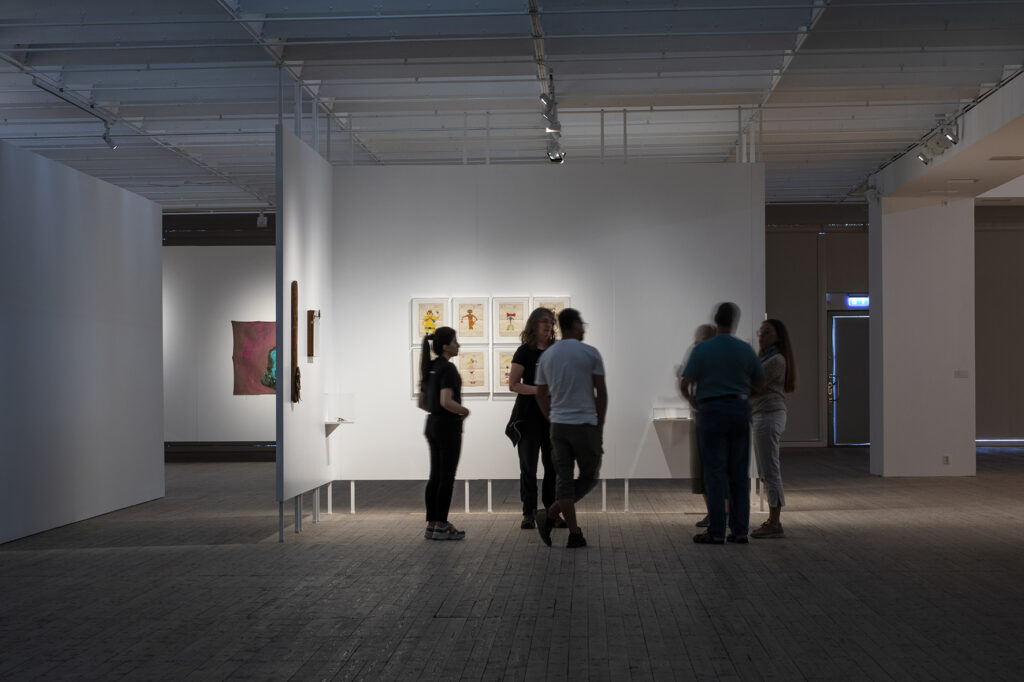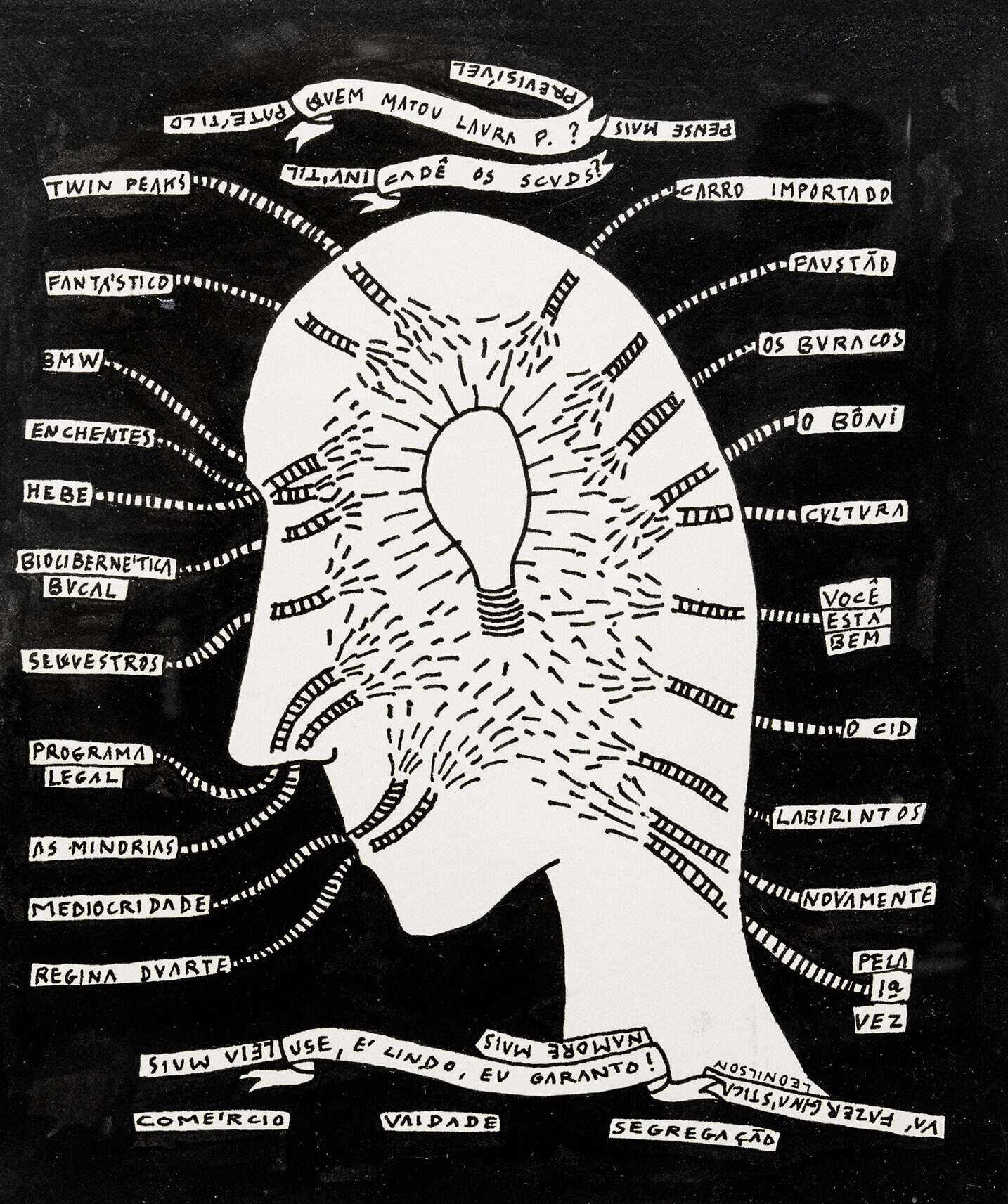
Foto: Helene Toresdotter
José Leonilson – Drawn: 1975–1993
19.6–10.10 2021
“Leonilson – Drawn: 1975–1993” is the first major retrospective exhibition of the Brazilian artist José Leonilson to be shown in Europe. Leonilson (1957–1993) was one of the most important members of the generation of Brazilian artists that was referred to as the “Geração 80” (Generation 80). After the collapse of the military dictatorship in Brazil in 1985, the Geração 80 celebrated their newly won freedom by painting in a colourful, expressive style. While the US art scene of the 1980s was seeking to update American pop art, for example by incorporating characteristic symbols of industrial society, the Latin American artists associated with Geração 80 were creating their works from a socially critical point of view.
Inspired by the Transavantgarde and textile works
An exhibition of textile craft objects made by the American Christian sect known as the Shakers, which he saw in 1986, would be a turning point in his production. The skilled craftsmanship of the Shakers was evident in, among other things, embroidered maps decorated with symbols of nature, life on Earth, and a spiritual realm. This encounter with these esoteric yet rustic works became a powerful source of inspiration for Leonilson, that would lead him onto two connected paths, where he on the one hand prioritised textile works and embroidery, and on the other hand began to address the concept of disappearing and the vulnerability of the body as the main subjects of his art.
The AIDS diagnosis changed Leonilson’s visual language
When Leonilson was diagnosed with AIDS in 1991, his visual idiom changed significantly. Between 1991 and 1993, when he passed away as a result of the disease, the deterioration of his health can be traced through his work, almost like reading a journal. Towards the end of his life, he worked mostly with needle, thread, and fabric, because of the physical toil that his condition took on him, and because he couldn’t bear the smell of paint anymore.
An overview of the entire body of work
“Leonilson – Drawn: 1975–1993” gives an overview of Leonilson’s entire oeuvre, and covers a wide range of expressions and styles. The exhibition was compiled at the KW Institute for Contemporary Art, Berlin, by curator Krist Gruijthuijsen. The Malmö edition of the exhibition was produced in collaboration with Moderna Museet in Stockholm and Malmö Konsthall.
The exhibition “Leonilson – Drawn: 1975–1993” is produced by KW Institute for Contemporary Art, Berlin, in collaboration with Moderna Museet, Malmö Konsthall, and the Serralves Foundation – Museum of Contemporary Art, Porto. The exhibition was made possible by support from the German Federal Cultural Foundation.
The exhibition is being shown at Malmö Konsthall as part of WorldPride 2021 in Malmö and Copenhagen, and of Öppna Malmö (Open Malmö), the city of Malmö’s initiative to promote awareness about discrimination and racism, which runs from 2020 to 2022.


Private ownership.
Photo: Rubens Chiri

Foto: Helene Toresdotter

“Moda bizarra aterrissa nas bocas e nas TVs”, 1991
Private collection, São Paulo
Photo: Helene Toresdotter

Foto: Helene Toresdotter